In this travel report, we’ll look at a short domestic flight between the city of Yeosu – perched on the southern edge of the Korean peninsula – and Seoul’s Gimpo Airport.
Welcome aboard Korean Air Flight KE 1332.
Note: The details presented here are only for the specific flight reviewed. This information might not hold true for previous or future flights, even if operated by the same airline on the same route and/or under the same flight number.
For the sake of brevity, IATA airline and airport codes have been used throughout this report in place of full names (e.g., “KE” instead of “Korean Air”; “GMP” instead of “Gimpo International Airport”).
This review covers the return leg (RSU-GMP) of a round-trip GMP-RSU-GMP journey. Click here to read my report on the outbound leg (GMP-RSU).
IMPORTANT! This report does NOT reflect operational changes (due to the ongoing global health emergency) that may have been introduced after my January 2020 flight. Additional pre-boarding procedures – such as temperature checks – and modifications to in-flight service and amenities should be expected.
ROUTE MAP
OVERVIEW
Flight details
Airline and flight number : Korean Air (KE) 1332
Route : Yeosu/Suncheon, South Korea (IATA code: RSU) to Seoul-Gimpo, South Korea (IATA code: GMP)
Route type : Domestic
Date : Monday, 27 January 2020
Scheduled departure time : 08:25
Actual departure time : 09:10
Scheduled arrival time : 09:25
Actual arrival time : 09:47
Equipment and cabin
Aircraft : Boeing 737-900
Manufacturer : Boeing
Registration number : HL7569
Passenger capacity : 8 “Prestige”/Business, 180 Economy (188 total)
Cabin configuration (seat maps) : Official Site
Travel class flown : Economy Class
Here’s HL7569 parked on the tarmac at RSU before departure…
…and here’s another shot of the aircraft, taken shortly after I disembarked at the domestic terminal of Seoul-GMP.
This aeroplane was delivered in late 2001, which puts its age at a few months past 18 years on the day I hopped aboard for flight KE 1332.
HL7569’s somewhat advanced age will become even more apparent later when we check out its interiors. Nonetheless, the aircraft as a whole appeared to be in good shape – outdated cabin equipment aside – and I didn’t notice anything during the flight (or during the critical take-off and landing phases) that would give cause for concern.
PRE-DEPARTURE EXPERIENCE
At the airport
My starting point was Yeosu Airport (IATA code: RSU), a small domestic facility perched on the edge of Gwangyang Bay.
The airport sits roughly midway between the cities of Suncheon and Yeosu, both of which are on the southern coast of mainland Korea. The high-speed KTX rail network also serves this part of the country, but it’s far enough away from Seoul to make domestic flights an appealing and convenient alternative.
Read more about Yeosu Airport here (departures) and here (arrivals).
Check-in and baggage
RSU’s terminal is very compact, with just two levels and no physical separation between the arrivals lobby and the departures/check-in zone. (Not landside, anyway; of course they’re fully separated airside for security reasons.)
On the day of my flight, KE’s counters were located on the left side of the check-in hall.
Unfortunately, it looks like they won’t be occupying this place for much longer. I’ve recently learned that KE plans to stop serving RSU in August 2020, leaving rival full-service carrier Asiana Airlines (plus a couple of LCCs) to maintain the GMP-RSU route. We’ll have to wait and see if the pull-out does push through or if Korean Air will ultimately decide to keep the link going.
I used one of the airport’s self check-in machines to print my boarding pass before going to the counter.
Here’s a cropped image of the boarding pass (with a few sections trimmed away and details fuzzed out). Printed on a long strip of thermal paper, the document looks and feels more like a store receipt than the conventional card-stock boarding passes one would receive for international flights. I noticed before another flight that those checking in at the counters were issued similar “receipt” passes – except printed on coloured paper stock – so this appears to be standard for domestic services.
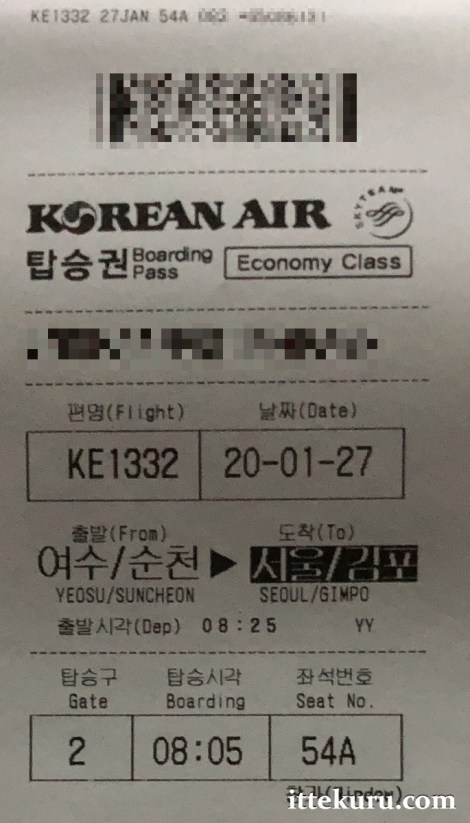
With that done, I queued up at the counters to check in my luggage.
Detailed information on baggage allowances and restrictions – covering both checked and cabin luggage – are available on KE’s official website.
Boarding
At the departure gate, separate lanes were provided for Economy Class and for those entitled to priority boarding (including Prestige Class).
There was a spot of wind and rain, but nothing that the enclosed aerobridge couldn’t handle.
ONBOARD EXPERIENCE
Cabin interior and seating
KE’s 188-seat Boeing 737-900 is fitted with 8 Prestige (Busines) Class seats in the forward cabin, and 180 Economy Class seats further aft. The Prestige Class seats are organised into two rows (numbered 7-8), four abreast, whereas Economy Class has a tighter configuration of six seats to each row.
I was seated in Prestige Class for the outbound journey, but there were no vacancies up front on the return leg and I had to settle for a place in the back.
Let’s have a look at the options. There’s the bulkhead if you’d like a little extra room, in exchange for a slight width reduction (since the tray tables are in the armrests) and the loss of floor storage.
And then there are the exit rows if you’d like to stretch out – provided, of course, that you’re willing to take on the extra responsibilities that come with the privilege. (Do take this seriously, fellow travellers: if you can’t or won’t assist in the event of an emergency then don’t even think about sitting in an exit row.)
As for myself … well, the long Seollal holiday is one of Korea’s two peak periods for domestic intercity travel (the other being Chuseok) and I was left with very few seats to choose from. I normally pick a spot forward of the wings, or at least right above them; alas, I could do no better this time than one of the very last rows in the fuselage.
Here’s a wider shot of the cabin, as seen from my row. I’ll say this much: at least the back of the plane offers a better view of the interior than closer to the front, where there’s less of the plane forward of you (hence less to see).
Mine was just a regular Economy Class seat, although it was comfortable enough for my needs and offered a decent amount of legroom. That said, I’m not a particularly tall or wide fellow; larger folk in one or both dimensions might find it a bit of a squeeze.
This was an older aeroplane, and the interiors – although well kept – reflected its age. Thicker seat backs, no power points, no built-in IFE … just the usual tray table with built-in cupholder.
Catering
Not much to report on this subject, I’m afraid. On a domestic flight such as this – and quite a short one at that – meal services are quite literally off the table (even in Prestige/Business Class).
Thankfully, we were at least served a choice of beverage during our time in the air.
In-flight entertainment
As I’ve mentioned earlier, the seats on this small aeroplane weren’t fitted with individual IFE screens. Not that IFE would have been needed on such a short flight, of course.
There’s always the seat pocket if you fancy some reading material.
And if you happen to be sitting right next to a window, you can enjoy a “live feed” of beautiful Korean landscapes … if the weather cooperates.
OVERALL IMPRESSION
When it comes to short domestic flights like this one, there really isn’t a lot to expect ahead of departure – nor much to say after landing.
The aircraft’s age and its outdated cabin equipment definitely stood out, although it’s important not to overstate their impact on a brief hop like RSU-GMP. Given the short time spent airborne, limited service makes economic sense and isn’t likely to rankle the typical passenger.
All things considered, I was satisfied with the experience and would gladly fly with Korean Air again on this route. (That is, assuming their planned August 2020 pull-out from RSU doesn’t push through.)
Cheerio.



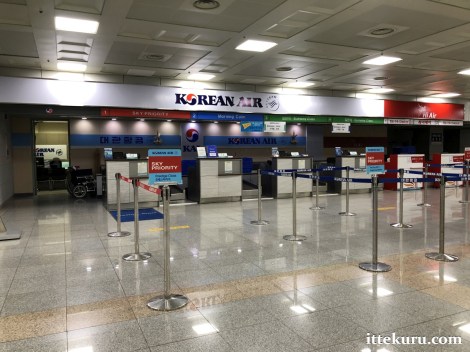
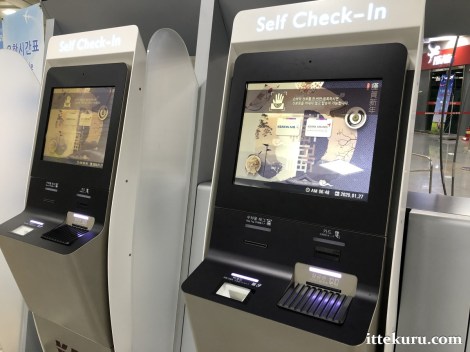
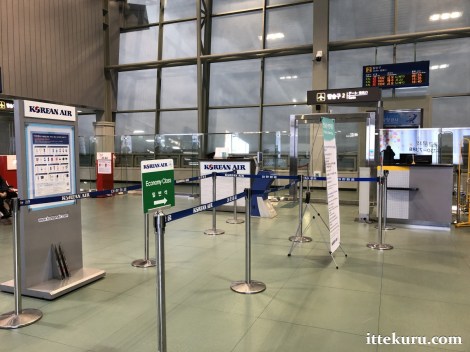




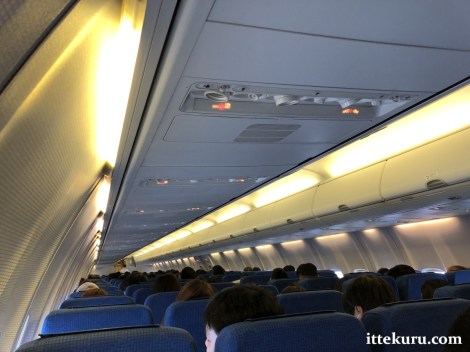
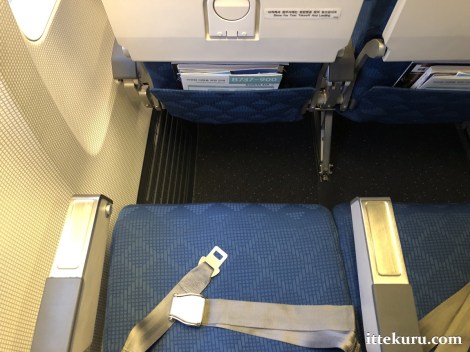


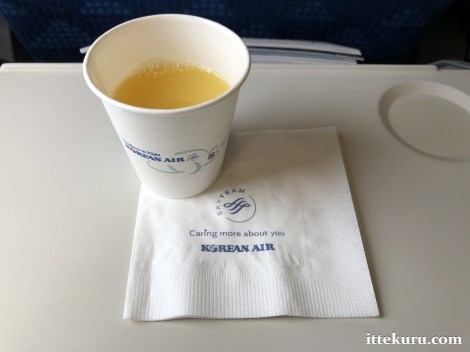
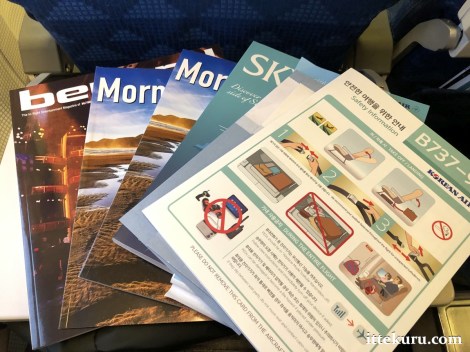

Pingback: Terminal Report: Yeosu Airport (RSU), Jeollanam-do, South Korea – Departures | Within striking distance·
Pingback: Flight Report: GMP-RSU on Korean Air Flight KE 1331 (24 January 2020) | Within striking distance·
Pingback: Terminal Report: Gimpo Airport Domestic Terminal, Seoul, South Korea – Arrivals | Within striking distance·
Pingback: Field Report: Heungbokjeon Hall at Gyeongbokgung, Seoul, South Korea (27 January 2020) | Within striking distance·